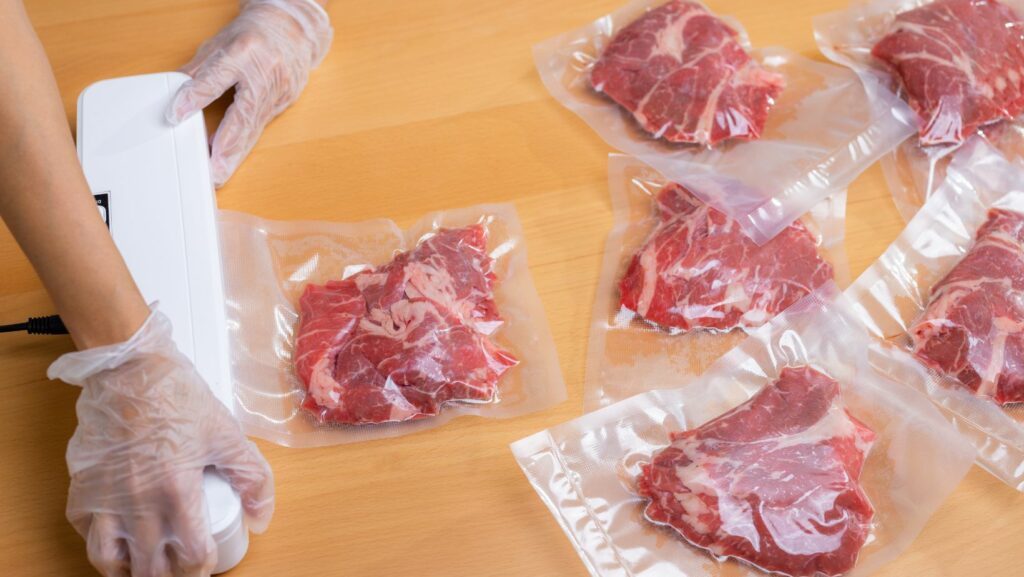Table of Contents
ToggleVacuum Packed Meat Has Air in It
Are you curious about why vacuum packed meat sometimes has air in it? You’ve come to the right place! In this article, I’ll be addressing some frequently asked questions (FAQs) regarding this topic. So, let’s dive in and unravel the mystery behind vacuum packed meat with air.
One common question many people have is: “Why does vacuum sealed meat sometimes contain air pockets?” Well, the answer lies in the packaging process. When meat is vacuum packed, a machine removes the air from the packaging before sealing it tightly. However, occasionally small amounts of residual air may remain trapped within the package. This can lead to the formation of tiny air pockets or bubbles.
What is vacuum packed meat?
Vacuum packed meat refers to the process of removing air from packaging in order to extend the shelf life of the meat. This method involves sealing the meat in airtight bags or containers and then using a vacuum sealer to remove any excess air. The absence of oxygen helps prevent spoilage, preserve freshness, and maintain the quality of the meat.
During the vacuum packing process, a machine extracts air from around the meat and creates a tight seal. This effectively reduces bacterial growth and inhibits oxidation, which can lead to discoloration and flavor loss. By removing air, vacuum packing also helps prevent freezer burn for frozen meats.
One common question that arises regarding vacuum packed meat is why it sometimes appears to have air inside despite being sealed tightly. This phenomenon can occur due to several reasons:
- Natural Processes: Over time, natural gases produced by microorganisms within the meat can create small pockets of air inside the packaging. While this may cause some expansion, it does not necessarily indicate spoilage or compromised quality.
- Moisture Content: Moisture present in certain cuts of meat can evaporate during storage or transportation, leading to an expansion of space within the package as steam forms and condenses into minute droplets.
- Packaging Integrity: Although vacuum sealing is designed to be effective at preventing air infiltration, there might be instances where tiny leaks or imperfections in the packaging material allow small amounts of air back in over time.

Why does vacuum packed meat have air in it?
When it comes to vacuum packed meat, the presence of air might seem puzzling. After all, isn’t the whole point of vacuum packaging to remove air? Well, the truth is that a small amount of air can still be present in vacuum packed meat for a few reasons:
- Packaging process: During the packaging process, a certain amount of residual air can remain trapped within the package. Even though manufacturers take great care to minimise this, some pockets of air may persist.
- Natural gases: Meat naturally produces gases like carbon dioxide and oxygen as part of its natural decomposition process. These gases can become trapped within the package despite the vacuum sealing.
- Leaky seals: Occasionally, vacuum sealed packages may have imperfect seals that allow small amounts of air to enter over time. This could result from issues during packaging or damage that occurs during transportation or storage.
As consumers, we should always check for signs of spoilage such as off-smells or unusual discoloration before consuming any packaged meat products – regardless if they are vacuum sealed or not.
So next time you notice a bit of air in your vacuum packed meat, don’t fret! It’s likely just a small and harmless occurrence due to various factors mentioned above. Is it safe to find air in vacuum packed meat? This is a common question that arises when people open their vacuum-sealed packages of meat and notice the presence of air. Let’s delve into this concern and shed some light on whether or not it’s safe.
The presence of air in vacuum packed meat may initially raise eyebrows, but rest assured, it is perfectly safe. Here’s why:
- Preservation: Vacuum packing is a widely used method for preserving food, including meats. The process involves removing the oxygen from the packaging to create an anaerobic environment that inhibits bacterial growth and spoilage. However, sometimes small amounts of air can seep back into the package during sealing or transportation, leading to its presence inside.
- Quality indicators: While the appearance of air might seem concerning, it can actually serve as an indicator of freshness and quality. When packaged meats have been properly sealed, any trapped air within can cause the package to appear puffed or inflated. This indicates that the seal has remained intact throughout storage and transportation.
- Safety measures: Manufacturers take strict measures to ensure food safety standards are met during production and packaging processes. These include maintaining hygiene levels, employing proper sealing techniques, and conducting quality checks before products leave their facilities. The presence of a small amount of air does not compromise these safety measures.

